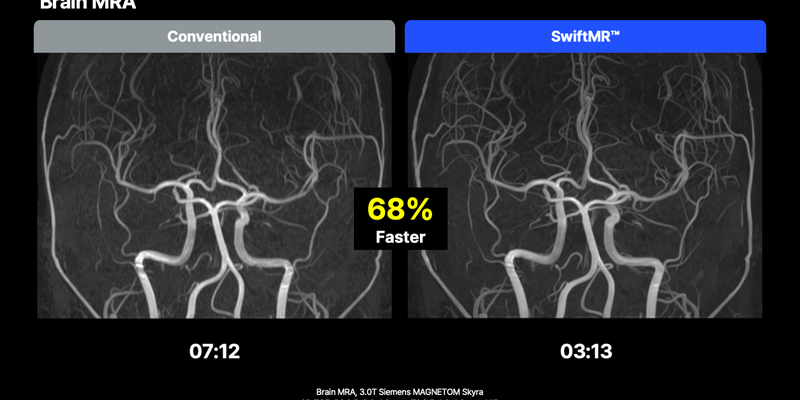
Company: AIRS Medical Product: SwiftMR
Deep learning improves quality of intracranial vessel wall MRI for better characterization of potentially culprit plaques
Scientific reports, 2024
Abstract
Intracranial vessel wall imaging (VWI), which requires both high spatial resolution and high signal-to-noise ratio (SNR), is an ideal candidate for deep learning (DL)-based image quality improvement. Conventional VWI (Conv-VWI, voxel size 0.51 × 0.51 × 0.45 mm3) and denoised super-resolution DL-VWI (0.28 × 0.28 × 0.45 mm3) of 117 patients were analyzed in this retrospective study. Quality of the images were compared qualitatively and quantitatively. Diagnostic performance for identifying potentially culprit atherosclerotic plaques, using lesion enhancement and presence of intraplaque hemorrhage (IPH), was evaluated. DL-VWI significantly outperformed Conv-VWI in all image quality ratings (all P < .001). DL-VWI demonstrated higher SNR and contrast-to-noise ratio (CNR) than Conv-VWI, both in normal walls (basilar artery; SNR 4.83 ± 1.23 vs. 3.02 ± 0.59, P < .001) and lesions (contrast-enhanced images; SNR 22.12 ± 11.68 vs. 8.33 ± 3.26, P < .001). In the assessment of 86 lesions, DL-VWI showed higher confidence of detection (4.56 ± 0.55 vs. 2.62 ± 0.77, P < .001), more concordant IPH characterization (Cohen’s Kappa 0.85 vs. 0.59) and greater enhancement. For culprit plaque identification, IPH exhibited higher sensitivity in DL-VWI compared to Conv-VWI (70.6% vs. 23.5%) and excellent specificity (94.3% vs. 94.3%). Deep learning application of intracranial vessel wall images successfully improved the quality and resolution of the images. This aided in detecting vessel wall lesions and intraplaque hemorrhage, and in identifying potentially culprit atherosclerotic plaques.
Read full study